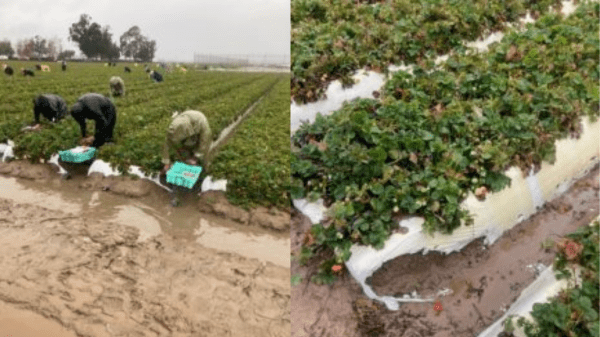In California, 2023 is turning out to be a 40-year anniversary repeat of 1983.
I lived in San Francisco then. Let’s see . . . Joe Jackson, “Steppin’ Out”; Quarterflash, “Harden My Heart”; Men at Work, “Land Down Under.”
They were hits in the early part of that year. I still associate them with rain. Because it rained every day in San Francisco for the first three months of 1983. It didn’t rain all day, every day, but it rained every day.
With similar disasters—flooding, mudslides.

And the same question from California agriculture: why can’t they store more of this water to use in dry years?
Put it into that overstuffed file labeled “It’s Not So Easy.”
Andrew Fisher, a hydrogeologist at UC-Santa Cruz, explains why in an article in Ars Technica. How California could save up its rain to ease future droughts | Ars Technica
In the first place, initial runoffs are often contaminated. Environmental Fate and Effects of Road Run-Off | SpringerLink Another source of contamination is septic system overflows. “That water would have to be treated,” Fisher writes.
Even so, why can’t this water be used for nonhumans—such as golf courses? Because it would have to be handled differently from the potable water in the main systems, requiring a completely different series of conduits.
Fisher believes that a better option is to use this excess for groundwater recharge—something that the state’s agriculture desperately needs.
“The idea is to siphon off some of that runoff and divert it to infiltration basins, occupying a few acres, where the water can pool and percolate into the ground,” writes Fisher. “That might be on agricultural land or open space with the right soil conditions.”
Fisher and some colleagues are trying this approach in the Pajaro Valley, an important agricultural region near Salinas.
“One program in the Pajaro Valley encourages landowners to participate in recharge projects by giving them a rebate on the fee they pay for water use through a ‘recharge net metering’ mechanism,” says Fisher.
This approach is promising, “provided we can find people who are willing to inundate their land and can secure water rights,” Fisher continues. “In addition, not every part of the landscape is prepared to take that water. You could inundate 1,000 acres on a ranch, and a lot of it might stay flooded for days or weeks. Depending on how quickly that water soaks in, some crops will be OK, but other crops could be harmed. There are also concerns about creating habitat that encourages pests or risks food safety.”
The Pajaro Valley is a good site for such a project, because there is heavy runoff from the adjoining hills.
On a larger scale, again it’s not so simple. Agriculture is concentrated in the southern and central parts of the state’s great Central Valley, but much of the water is in the north.
Groundwater recharge, even in the wettest years, would require massive water transfer projects of the sort for which state government has shown very little appetite in recent decades.
Fisher stresses that even the current deluge does not in itself solve California’s longstanding drought, although it is a help. In fact, even one wet year will not entirely eradicate years of constant drought.
At least someone is trying to think of a way to save a little more of that deluge for dry times.



